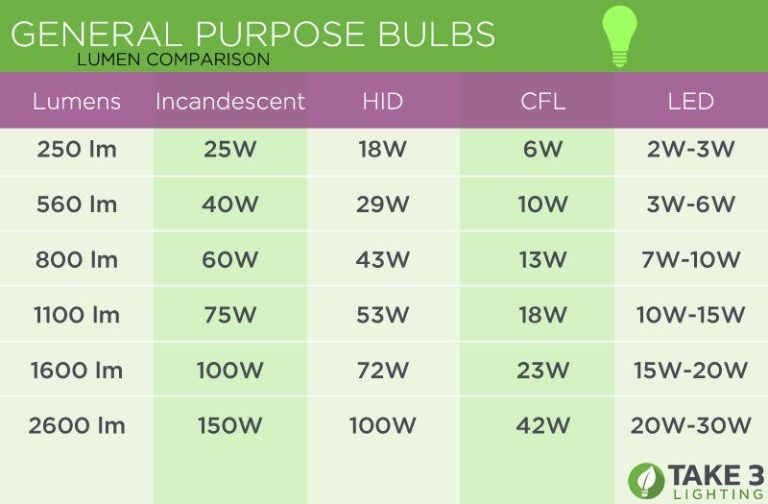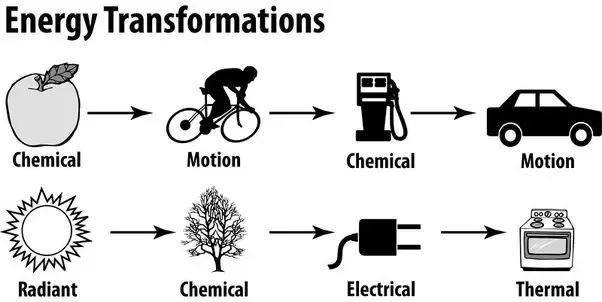Which Things Can Be Reduced?
Reducing Food Waste
Up to one third of all food produced globally ends up as waste. This amounts to a staggering 1.3 billion tons per year worldwide. Food waste has major environmental impacts, accounting for 8% of greenhouse gas emissions globally. Landfilling food also wastes the water, energy, labor and other resources that went into producing it.
There are many simple ways consumers can reduce food waste in their homes. Planning meals ahead of time, storing food properly, freezing leftovers, and using produce before it goes bad are some helpful tips. Checking expiration dates, understanding the difference between “sell by” and “use by” dates, and being creative with leftovers can also cut down on waste.
Grocery stores and restaurants are also making efforts to reduce food waste. Some stores donate unsold fresh food to charities and food banks. Setting up employee food share programs is another initiative. Restaurants are reducing waste by modifying their menus and portions based on demand. Composting food scraps is becoming more common in many establishments as well.
Reducing Energy Consumption
There are many ways households can reduce their energy consumption to lower costs and help the environment. Simple behavior changes like turning off lights and electronics when not in use, using ENERGY STAR certified appliances, and adjusting the thermostat a few degrees cooler in winter or warmer in summer can make a big difference.
Sealing air leaks around windows and doors, adding insulation, and upgrading to an efficient furnace or AC unit provide even more energy savings. Installing solar panels allows you to generate your own renewable electricity. Smart home devices like programmable thermostats further automate and optimize energy use.
Various government rebates, tax credits, and loan programs are available to incentivize households to pursue energy efficiency upgrades. For example, many utilities offer rebates for purchasing ENERGY STAR appliances or weatherizing your home. There are also often federal or state tax credits for installing solar panels or other renewable energy systems.
Reducing home energy use saves money on utility bills, improves comfort and indoor air quality, lowers your carbon footprint, and reduces strain on the electrical grid. With some simple habitual changes and smart investments in efficiency upgrades, households can significantly cut their energy consumption while living just as comfortably.
Reducing Water Usage
Households account for almost 8% of all water consumption in the U.S., with the average American using around 88 gallons per day. The largest water users are power plants, using around 39% of total freshwater withdrawals. Agriculture accounts for nearly 37% of water use. However, businesses and individuals can still take steps to conserve water.
Simple changes like taking shorter showers, turning off taps while brushing teeth or shaving, and only running dishwashers and washing machines with full loads could reduce household water use significantly. Installing low-flow showerheads and faucets also helps decrease water waste.
For businesses, avoiding leaks, capturing rainwater for landscaping, and recycling water through cooling systems are effective conservation tactics. Upgrading to water-efficient appliances and processes in facilities can also dramatically cut business water usage.
Innovative technologies are making it easier to reduce water waste. Smart irrigation systems automatically adjust watering schedules based on weather. Low-flow toilets, faucets, and showerheads restrict water flow. Water recycling systems filter and treat wastewater for reuse in things like irrigation and industrial processes. With some creativity and commitment to conservation, households and businesses can significantly reduce their water usage.
Reducing Driving
Driving, especially in single occupancy vehicles, can have a major environmental impact through greenhouse gas emissions that contribute to climate change. Transportation accounts for around 30% of total U.S. emissions, with most coming from passenger cars and light-duty trucks. Reducing driving, especially by switching to alternative transit options, can be an impactful way to lower your carbon footprint.
Public transportation like buses, subways, and trains greatly reduce emissions per passenger mile compared to driving. Walking and biking produce no emissions and provide health benefits. Carpooling cuts emissions by distributing them between multiple passengers. Living closer to work and in walkable, transit-oriented communities can reduce driving needs.
Urban planning and land use patterns also influence how much we drive. Sprawling, car-centric city layouts make people dependent on automobiles for all trips. Compact, mixed-use neighborhoods with amenities in walking distance facilitate less driving. Advocating for transit-friendly development in your community can support reductions in driving long-term.
By being mindful of your transportation choices and using alternatives when possible, you can significantly lower your carbon footprint and environmental impact from driving while getting around efficiently. Supporting public transit expansion, walk/bike friendly spaces, and smart urban planning are also impactful ways to enable wider reductions in driving.
Reducing Pollution
Pollution is a major global issue that harms the environment and human health. Some leading causes of pollution include factories, power plants, vehicles, and agriculture. As countries industrialize and populations grow, pollution rises. However, with conscious effort we can curb pollution through clean technologies and better practices.
Air pollution from sources like power plants, cars, and dust leads to respiratory disease and millions of premature deaths worldwide. Water pollution from chemical runoff, oil spills, and waste causes algal blooms that suffocate aquatic life. Soil pollution from improper disposal of industrial and agricultural waste poisons food chains via bioaccumulation.
Replacing fossil fuel energy with renewable solar, wind, and nuclear power dramatically cuts air pollution. Manufacturing goods locally, walking and biking more, and upgrading mass transit reduces vehicle emissions. Farmers can practice organic agriculture with natural pest control and rotate crops to maintain soil health. Composting food waste on-site reduces methane pollution from landfills.
Pollution control policies, cap-and-trade programs, plastic bag bans, and public education encourage further progress. Consumers can choose eco-conscious products and dispose of hazardous household chemicals properly. With mindfulness of our ecological impact, individuals and governments can work together to preserve a clean environment for future generations.
Reducing Consumerism
In today’s consumer culture, we are constantly bombarded with advertisements and messaging that encourage us to buy more things. This promotes a lifestyle of materialism, where we derive meaning and happiness from the stuff we own. However, research shows that after basic needs are met, acquiring more possessions does not significantly increase life satisfaction. At the same time, consumerism depletes natural resources and harms the environment.
Here are some tips for reducing consumerism and avoiding unnecessary purchases:
- Adopt a minimalist lifestyle by decluttering and focusing on owning only essential, useful items.
- Buy only what you need, not what you want. Avoid impulse purchases.
- Evaluate if a purchase will improve your life or just provide short-term gratification.
- Prioritize spending on experiences like travel, hobbies and time with loved ones over material goods.
- Wait several days before making a significant purchase to let the desire fade.
- Unsubscribe from brand emails and limit exposure to advertisements.
- Repair possessions instead of replacing them.
- Opt for secondhand or borrow instead of buying new.
Shifting focus away from possessions and towards meaningful experiences and relationships can increase happiness. Conscious consumption enables us to reduce waste, help the environment, and realign life priorities.
Reducing Stress
Stress is an unavoidable part of life, but chronic stress can take a serious toll on both physical and mental health. Some of the leading causes of stress include demanding jobs, financial pressures, relationship troubles, and major life changes. When stress becomes an ongoing issue, it can increase blood pressure, disrupt sleep, weaken the immune system, and even change brain chemistry over time, leading to increased risk of anxiety, depression, heart disease, and more.
There are many healthy ways to manage stress and prevent it from becoming a chronic problem. Getting regular exercise, which releases endorphins that counteract stress hormones, is very beneficial. Relaxation practices like yoga, meditation, deep breathing, and massage therapy can also activate the body’s relaxation response and reduce feelings of tension. Adjusting unhealthy thought patterns through cognitive behavioral therapy is another proven stress management technique. Beyond that, getting enough sleep, maintaining fulfilling relationships, keeping a sense of humor, and setting aside time for hobbies and interests can all help keep stress levels balanced.
Making a few lifestyle changes to better cope with stress can go a long way in protecting long-term health and wellbeing. Learning to manage stressful situations rather than becoming overwhelmed by them is an important skill for reducing the impacts of chronic stress.
Reducing Screen Time
Excessive screen time has been linked to increased anxiety, depression, sleep issues, obesity, and reduced attention spans. With the average American adult spending over 11 hours per day looking at screens, setting limits on our recreational screen use is crucial for our wellbeing.
Here are some tips for reducing recreational screen time:
- Turn off all non-essential notifications on your devices to avoid constant interruptions.
- Set a timer or app limit on social media and gaming apps to restrict usage.
- Schedule designated digital detox times or days where you completely unplug.
- Remove screens from the bedroom to avoid late night scrolling affecting sleep.
- Plan activities and social events that don’t revolve around screens.
- Spend time outdoors, socializing in-person, exercising, reading, or doing hobbies.
- Replace mindless scrolling with more intentional technology use like online learning.
Making small, incremental changes can have a big impact. Prioritize real world connections and activities that bring you joy. Your mental health and relationships will thank you.
Reducing Clutter
Clutter can accumulate quickly in any home or office, taking up valuable space and creating unnecessary distractions. By taking steps to reduce clutter, you can enjoy a range of benefits both psychological and practical.
On a practical level, reducing clutter makes cleaning easier and creates room for the things you truly use and enjoy. With less visual noise, it’s easier to find important items when you need them. A tidy space also functions better ergonomically by allowing you to move and work more efficiently.
Psychologically, clutter has been linked to increased stress and anxiety. Visual chaos makes it more difficult for our brains to relax and focus. Decluttering can provide a sense of control and accomplish that is calming. It also curbs compulsive shopping habits since there is no longer room to accommodate new items.
To effectively tackle clutter, be systematic in your approach:
- Sort through each area completely before moving on. Don’t just address the surface layer.
- Get rid of broken, unused, unneeded, or duplicate items. Be ruthless.
- Store items smartly using organizers, shelves, baskets and clear labels.
- Maintain the system through quick daily tidy-ups and regular purges.
For paperwork and computer files, be sure to have a digital organizational system and commit to processing files quickly. Schedule time to purge old emails and delete drafts, downloads and unused documents. Stick to the motto: handle it once.
With some concerted effort, it is possible to create and maintain clutter-free spaces. You’ll gain both physical and mental space to focus on what matters most.
Reducing Plastic Use
Plastic pollution is one of the biggest environmental challenges we face globally. Over 300 million tons of plastic are produced every year, half of which is for single-use items like packaging, bottles and bags. This plastic ends up in landfills, in oceans and waterways, and breaks down into microplastics which make their way into our food chain.
The impacts of plastic waste are far reaching. Plastic pollution harms marine life and ecosystems when animals get entangled in plastic or mistake it for food. Microplastics have even been discovered in our drinking water sources. As consumers, we can make a difference by consciously reducing our plastic consumption.
Simple everyday changes like using reusable bags, straws, and bottles can drastically cut down on single-use plastics. Many coffee shops now offer discounts for bringing a reusable cup. Carrying reusable utensils in your bag or purse avoids the need for plastic cutlery when you’re on-the-go. When grocery shopping, choose loose vegetables rather than pre-packaged in plastic.
Many brands are also stepping up to reduce plastic packaging and make more sustainable choices. This includes big retailers like IKEA and Walmart who have pledged to reduce plastic packaging. Coca-Cola aims to make all their packaging recyclable by 2025. And consumer pressure is pushing more companies to rethink wasteful plastic packaging.
With conscious consumer choices and companies prioritizing sustainability, we can make great progress in reducing needless plastic waste.





